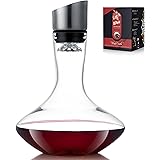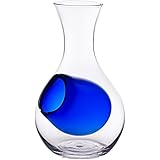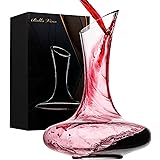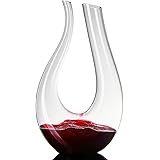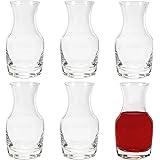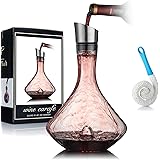Unlock Your Inner Sommelier: Mastering the Art of Wine Tasting
For many, the world of wine tasting can seem shrouded in mystery, filled with complex jargon and an air of exclusivity. Perhaps you’ve watched the video above and felt a surge of inspiration, realizing that learning how to taste wine like a pro is more accessible than you ever imagined. This journey of sensory exploration isn’t about being born with a special palate; it’s about training your senses, much like discerning the difference between your favorite burger joints after enough experiences.
Dismiss the notion that you need to be an expert to appreciate wine more deeply. The truth is, anyone can enhance their wine experience by understanding a few fundamental principles. This guide expands on the video’s excellent framework, offering practical insights into the four essential steps: Sight, Nose, Palate, and Analysis. By consciously engaging with each of these stages, you will unlock a richer appreciation for every glass of wine you encounter.
1. The First Pillar of Wine Tasting: Sight
Though often overlooked, the visual assessment of wine provides crucial clues about its character and history. Before even bringing the glass to your nose, take a moment to observe it against a pure white background, such as a napkin or a piece of paper. This simple action allows you to accurately gauge the wine’s clarity and color.
Clarity and Concentration
First, check for clarity. Most wines, unless specifically unfiltered, should appear bright and free of sediment or haziness. A cloudy appearance might suggest a wine fault or a specific production style, but typically a clear wine indicates careful winemaking processes.
Next, assess the concentration or intensity of the color. Hold the glass at an angle, noting how opaque or transparent the wine appears. A very translucent wine, where you can easily read text through it, often suggests a lighter-bodied varietal with potentially lower alcohol content, such as a Pinot Noir or a lighter-style Sauvignon Blanc. Conversely, a deeply concentrated, opaque wine usually points to a fuller-bodied wine, possibly with higher alcohol and richer mouthfeel, like a Cabernet Sauvignon or a Syrah.
Understanding Wine Color
The specific hue of a wine offers valuable insights into its age, grape variety, and winemaking techniques. As white wines evolve, their color typically shifts from pale straw or nearly colorless to deeper gold, and eventually to amber. This progression often indicates exposure to oxygen, oak aging, or significant bottle age. For example, a young Pinot Grigio will likely be pale, while an aged Chardonnay could exhibit rich golden tones.
Red wines also tell a story through their color spectrum. They generally transition from vibrant purple or ruby in their youth, to a brick-red or garnet hue as they age. Browning at the rim of a red wine glass is a classic indicator of extended bottle age and increased oxygen exposure. Think of a young Zinfandel’s deep purple versus an older Rioja’s distinct garnet edge.
The Myth of Wine Legs
Many novice tasters are captivated by the “legs” or “tears” that cling to the inside of the glass after swirling. These streaks often mistakenly correlate with wine quality. In reality, wine legs are primarily an indicator of the wine’s alcohol content and its viscosity, driven by surface tension and evaporation. While they are a fascinating visual phenomenon, they provide no reliable information about a wine’s inherent quality or complexity. Therefore, feel free to admire them, but don’t let them sway your judgment of the wine’s true character.
2. Unlocking Aromas: The Power of the Nose
After observing its visual cues, the next crucial step in wine tasting is to engage your sense of smell. Our noses are remarkably sensitive instruments, capable of detecting thousands of distinct aromas, far more than our tongues can taste. This makes the nose arguably the most important step in dissecting a wine’s profile, providing a rich tapestry of information before the first sip.
The Art of Swirling and Sniffing
Begin by giving your glass a gentle, controlled swirl. While this might appear ostentatious, there’s genuine science behind the action. Swirling increases the wine’s surface area exposed to air, encouraging the evaporation of alcohol, which acts as a carrier for the wine’s aromatic compounds. Try a simple experiment: smell a still glass of wine, then swirl it and smell again; you’ll notice a significant difference in the intensity and range of aromas. When smelling, position your nose just above the rim of the glass, taking short, gentle sniffs. Avoid plunging your nose too deeply, as the concentrated alcohol vapors can overwhelm your olfactory senses.
Identifying Wine Faults
Before diving into the pleasurable aromas, it’s essential to check for any wine faults. A fault indicates a problem with the wine that diminishes its quality or makes it undrinkable. The most common fault is “cork taint” or “corked wine.” This occurs when a chemical compound, TCA (2,4,6-trichloroanisole), forms in the cork. A corked wine will smell distinctly of damp, moldy cardboard, wet dog, or a musty basement. If you detect these unpleasant aromas, the wine is likely corked and should be returned.
Unpacking Fruit Characters
Once you confirm the wine is clean, focus first on its fruit character. This provides a fundamental understanding of the grape and its ripeness level. For white wines, consider a spectrum from crisp citrus (lemon, lime, grapefruit) to lush stone fruit (peach, apricot, nectarine), and finally to exotic tropical fruit (pineapple, mango, guava, passionfruit). A cool-climate Sauvignon Blanc, for instance, might show strong citrus notes, while a warmer-climate Chardonnay could lean towards tropical fruit.
Red wines follow a similar fruit spectrum. Cooler climate reds often showcase bright red fruits (cranberry, cherry, raspberry, pomegranate). As ripeness increases, you might detect blue fruits (blueberry) and then rich black fruits (blackberry, blackcurrant/cassis, plum, black cherry). A Beaujolais will typically have red fruit notes, while a Barossa Shiraz often presents with bold black fruit characteristics.
Beyond identifying the fruit type, challenge yourself to describe its character. Is the cherry tart and fresh, perfectly ripe, or overripe and jammy? Is the lemon zest bright, or dried and candied? These nuances offer deeper insights into the wine’s origin and winemaking style. Dried fruit notes, such as prune or raisin, often indicate an older or intentionally concentrated wine.
Exploring Non-Fruit Aromas
After the fruit, explore the fascinating world of non-fruit aromas. These can add incredible complexity and depth to a wine. Look for:
- Earthy/Mineral Notes: Think of wet soil, forest floor, mushroom, slate, gravel, or even flint. These can be particularly prominent in Old World wines like Burgundies.
- Floral Notes: Delicate scents of rose, violet, lavender, or orange blossom can elevate a wine’s bouquet. Gewürztraminer, for example, is known for its intense floral perfume.
- Herbal/Vegetal Notes: Grass, bell pepper, mint, eucalyptus, green tea, or even asparagus can appear, especially in certain cool-climate wines. Cabernet Franc often displays a distinct bell pepper aroma.
- Savory/Spicy Notes (non-oak): Black pepper, white pepper, licorice, and anise can emerge from the grape itself. Syrah is a prime example of a varietal that often exhibits peppery nuances.
- Dairy/Nutty Notes: In white wines, especially those that undergo malolactic fermentation (a process converting malic acid to softer lactic acid), you might find aromas of butter, cream, or yogurt. Some older wines can develop hazelnut or almond notes.
Detecting Oak Influence
Finally, identify aromas imparted by oak treatment. Oak barrels, particularly new ones, contribute distinct characteristics to wine. Look for baking spices like vanilla, cinnamon, clove, and allspice. Toasty notes, charred wood, smoke, or even coffee and chocolate can also be indicators of oak aging. American oak can sometimes contribute unique aromas of coconut or dill, whereas French oak tends to offer more subtle spice and toast. The presence and intensity of these aromas tell you much about the winemaking choices and the wine’s potential structure.
3. Engaging the Palate: Taste and Structure
After thoroughly examining the wine’s appearance and aromas, it’s time for the most anticipated step: tasting. This is where your palate confirms or challenges your olfactory predictions and, crucially, reveals the wine’s fundamental structure. Take a moderate sip, allowing the wine to coat your entire mouth. You might even mimic the “chewing” action some experienced tasters use, which helps to aerate the wine and maximize contact with your taste receptors.
When you taste, focus on two primary aspects: confirmation of flavors and the wine’s structural elements.
Confirming Flavors and Discovering New Ones
Does the wine taste as it smelled? Are you detecting the same fruit, non-fruit, and oak characters you identified on the nose? Often, the palate will reinforce these aromas, but it can also reveal entirely new flavors. The interaction of taste, texture, and aroma in your mouth is far more complex than smell alone, sometimes bringing out nuances that weren’t evident on the nose.
The Five Pillars of Wine Structure
The structure of a wine refers to its mouthfeel and how its fundamental components interact. These five elements are key to understanding a wine’s balance and overall impression:
- Acidity: This is the wine’s liveliness and freshness, often perceived as a mouth-watering sensation on the sides of your tongue. Think of the crispness in a lemon or a green apple. High acidity makes a wine feel bright and refreshing, while low acidity can make it seem flat or flabby. Acidity is crucial for food pairing, as it cuts through rich dishes and cleanses the palate.
- Alcohol: Alcohol contributes to the wine’s body and, in higher concentrations, can manifest as a warming sensation in the back of your throat. While a certain amount of warmth is normal, excessive burning indicates an unbalanced, “hot” wine. The alcohol content is clearly listed on the bottle, but tasting helps you understand its integration.
- Body: This refers to the perceived weight or richness of the wine in your mouth. Analogies often used are skim milk (light-bodied), 2% milk (medium-bodied), and whole milk or cream (full-bodied). Body is influenced by alcohol, residual sugar, and other dissolved solids. A full-bodied wine feels more viscous and coats the palate more thoroughly.
- Tannin (Red Wines Only): Tannins are polyphenolic compounds found in grape skins, seeds, and stems, as well as oak barrels. They create a drying, astringent sensation, particularly on your gums and the roof of your mouth. This firming sensation provides structure and backbone to red wines, allowing them to age gracefully and pair well with rich, fatty foods. Misidentified as “dryness,” tannin is a distinct textural element that ranges from soft and supple to robust and grippy.
- Sugar (Sweetness): While many wines are technically “dry” (meaning all grape sugar has been fermented into alcohol), sweetness is a distinct structural component. A wine is sweet if you can detect perceptible residual sugar. While many fruit-forward wines can seem sweet due to intense fruit flavors, true sweetness comes from unfermented sugar. Examples include many Rieslings (ranging from off-dry to sweet) and classic dessert wines like Port or Sauternes.
By consciously evaluating these five elements, you begin to build a comprehensive picture of the wine’s inherent characteristics and how they contribute to your overall tasting experience.
4. The Art of Analysis: Balance, Length, and Complexity
The final step in how to taste wine like a pro is analysis, where you synthesize all your observations to form a qualitative judgment. This stage moves beyond simply identifying characteristics to evaluating how well those characteristics integrate and evolve.
Evaluating Balance
A balanced wine is one where all its structural components—acidity, alcohol, tannin, and sweetness—are in harmony, with no single element dominating or feeling out of place. Imagine an orchestra where every instrument plays its part beautifully without any one section overpowering the others. A wine that is too acidic might feel tart and sharp, while one with too much alcohol might burn or feel “hot.” A truly balanced wine offers a seamless and integrated experience, where each element supports the others to create a cohesive whole. This balance is a hallmark of well-made wines, regardless of their price point.
Assessing Length (Finish)
The length, often referred to as the “finish,” measures how long the flavors and sensations of the wine persist on your palate after you’ve swallowed. A longer finish is generally indicative of a higher quality wine. Does the taste fade almost immediately, or do the flavors linger and evolve for several seconds, perhaps even minutes? A truly exceptional wine can leave you savoring its nuances long after the sip, revealing new dimensions as it slowly recedes. The length contributes significantly to the overall impression and memorability of a wine.
Discovering Complexity
Complexity refers to the number and variety of distinct aromas and flavors you detect, and how they evolve over time. Is the wine simple, offering just one or two primary notes like “just apples” or “just citrus”? Or does it reveal multiple layers—fruit, earth, spice, floral, oak—that unfold and change with each sniff and sip? A complex wine offers a fascinating journey for your senses, providing continuous discovery as it opens up in the glass. It might start with fresh fruit, then reveal savory undertones, and finally, a hint of aged character. This dynamic evolution is often what makes expensive or age-worthy wines so captivating.
By taking all these elements into consideration—balance, length, and complexity—you can form a comprehensive judgment about the wine’s quality and, most importantly, your personal enjoyment of it. This structured approach to wine tasting is a roadmap to unlocking deeper appreciation, allowing you to move beyond simply “liking” a wine to understanding precisely why you do.


